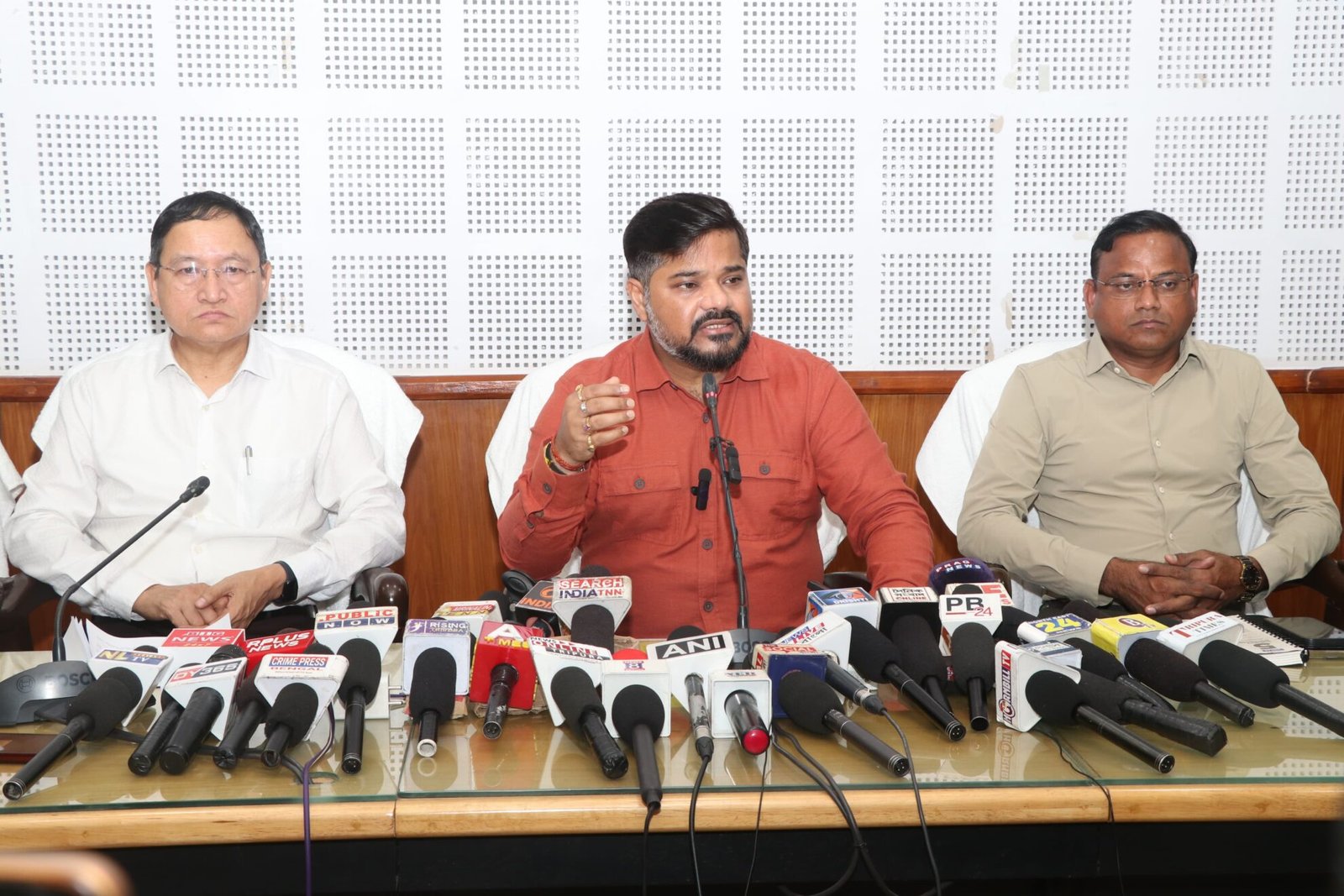Agartala, June 18, 2025: The Tripura Transport Department on Tuesday announced a significant decision aimed at addressing the growing dissatisfaction among Agartala residents regarding the auto-rickshaw service, particularly concerning operations by vehicles from outside subdivisions.
Addressing a press conference at Civil Secretariat in Agartala city on Tuesday afternoon, Transport Minister Sushanta Chowdhury said, “The increasing complaints from the public and working-class commuters in Agartala have made it clear that the current system is causing confusion and conflict on the ground.”
To tackle this issue, a high-level meeting was held on June 10, chaired by Minister Chowdhury himself, which included senior officials from the Transport Department, the IG of Law and Order, Traffic Superintendent, and officials from both police and general administration. Leaders of motor workers’ unions and auto syndicates also participated.
“One of the major concerns is that autos from outside subdivisions like Jirania, Mohanpur, and Bishalgarh often enter Agartala city, sometimes with patients or passengers, which leads to fines by police and even quarrels with city-based auto drivers. This not only disrupts law and order but causes inconvenience to the general public,” Chowdhury said.
In order to clearly distinguish between city-based and outside autos, a decision was taken to paint the front part of all Agartala city meter autos in pink. Subdivision autos will retain their existing color. However, exceptions will be made for autos entering the city to drop patients or air passengers, he added.
“Legal action will be taken if autos from outside the city are found operating within Agartala without valid reasons. When too many foreign autos enter the city, it worsens the traffic congestion,” Chowdhury warned.
The minister urged all city-based auto drivers to complete the color change within one month, and appealed to auto drivers from outside subdivisions to respect the decision and cooperate with the administration.
“This measure is not just about enforcement, but about ensuring smoother traffic management and easing the daily lives of our citizens,” Chowdhury emphasized.









